A proof of concept (PoC) is a general term for providing logical proof that it’s actually possible to develop. The purpose of PoC is to:
- Validate a concept that is supposed to be developed.
- Explore different solutions that could essentially bring the idea into life.
What is a Proof of Concept (PoC)?
It’s demonstration of the practical feasibility of an idea to prove that the method, idea, or technology works.
Only critical functions are being tested, and the result may not be used in further development. Since the PoC’s goal is to make sure that the concept works in a short time, minor aspects can be omitted. In such cases, after getting the green light at the PoC stage, the team can start writing the project from scratch.
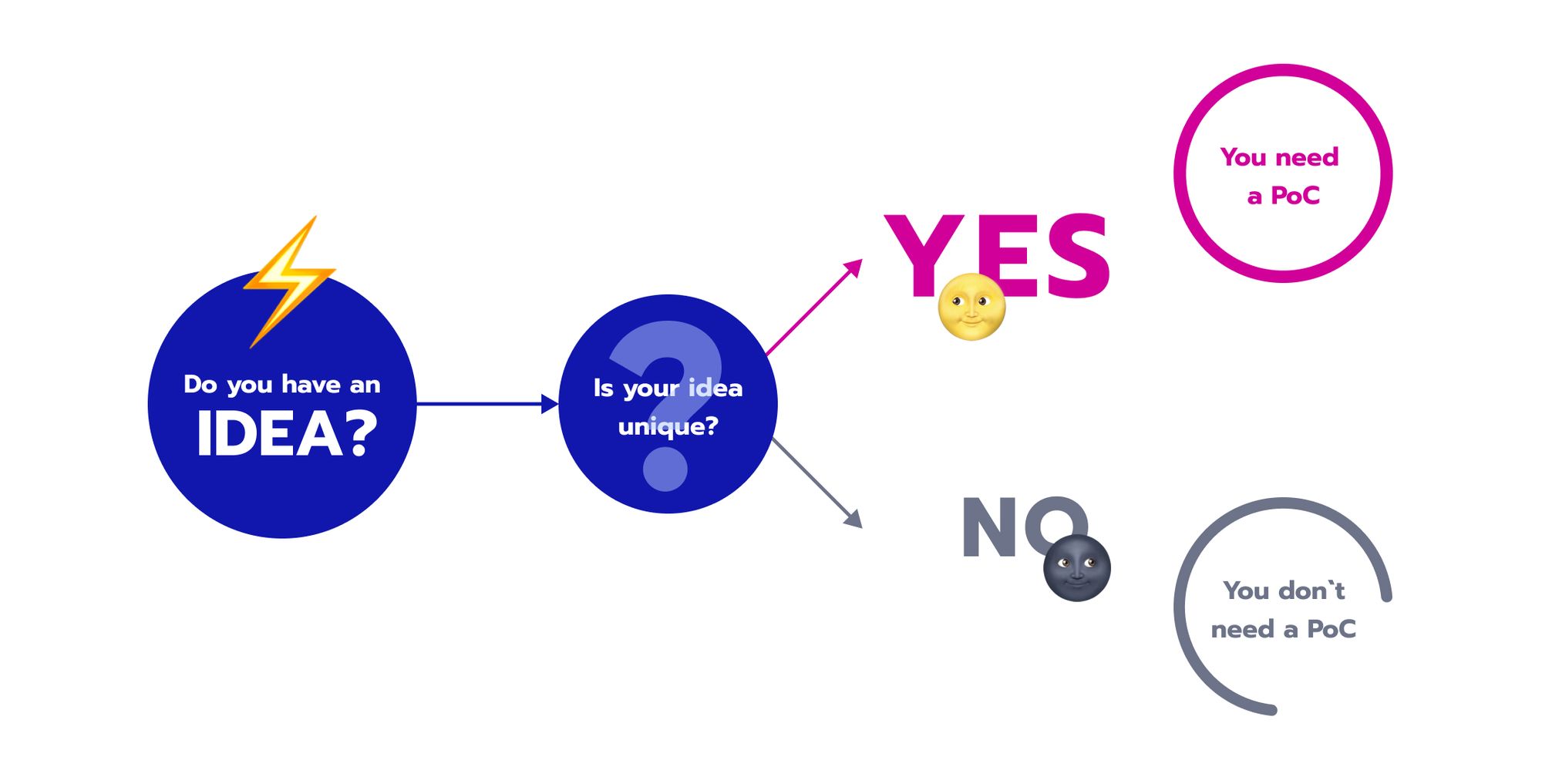
It is an optional stage of the project, and in most cases, is not required. But new opportunities are associated with:
- certain risks, including security threats
- high complexity of projects
- a shortage of qualified personnel
This means that before starting a project, you need to make sure that the solution works. And the costs and risks are proportionate to the business result.
Proof of Concept in App Development Process
Proof of concept in app development is not precisely what this process is for other products. The fact is that they serve different purposes. A proof of concept is usually required to show that the idea has potential and is in demand, and is necessary in software development to:
- confirm technical problems
- find a specific answer to a functional question
- test new features
PoC in the app development process is a confirmati n that some technical problems can be solved and in what way. For example, how the product can be integrated into an existing enterprise system from the technical side. The goal is to understand whether your idea of app development can be implemented. And what technologies can help you do this most effectively.
A great example of PoC developed by the Fulcrum Rocks team is our neural network that detects people wearing masks. Our goal was to check if it’s possible to identify people wearing masks on the streets, using just webcams. It’s not a commercial project, but it got us curious – whether or not the whole thing was viable.

As a result after just two weeks, we get a definite YES-answer. That’s how long it took us to create a neural network. This software could potentially be handy, if you decide to implement it at the factories & make sure that employees are wearing masks. As for the streets, it’s still too sci-fi and laborious to execute.
So, here are the essential benefits of proof of concept in software development:
- This project stage helps you save time and money by identifying which concepts do not work.
- You can gain a competitive advantage because PoC provides more assurance that an idea can be implemented.
Ultimately, this is a reliable way to avoid one of the most common mistakes that startup founders make: to spend their time and money on something that no one will ever buy.
Proof of Concept Development Stages at Fulcrum Rocks
Now, let’s go through the approximate stages of developing a PoC for an IT project.
1. Getting started
The business analyst’s task is to determine the PoC’s purpose. Also, BA should select the most complex and innovative features of the future product. Additional marketing research, investment search, and other activities can be carried out. The main goal is to get the “picture” of the product life cycle as close to reality as possible. At this stage, possible restrictions are also fixed.
2. User scenarios
Based on the information received, a list of user cases is created to check within the PoC. These scenarios help better understand the preferences of your target audience.
For example, our Kör case is an educational platform for drivers in Norway. For this project, we held a workshop to formulate:
- client’s business & project goals
- stakeholder groups
- app’s user types
- risks (general, tech, and management)
- actual roadmap of the project
We developed user flow diagrams for each user type. That’s how KÖR’s main student flow looks like:
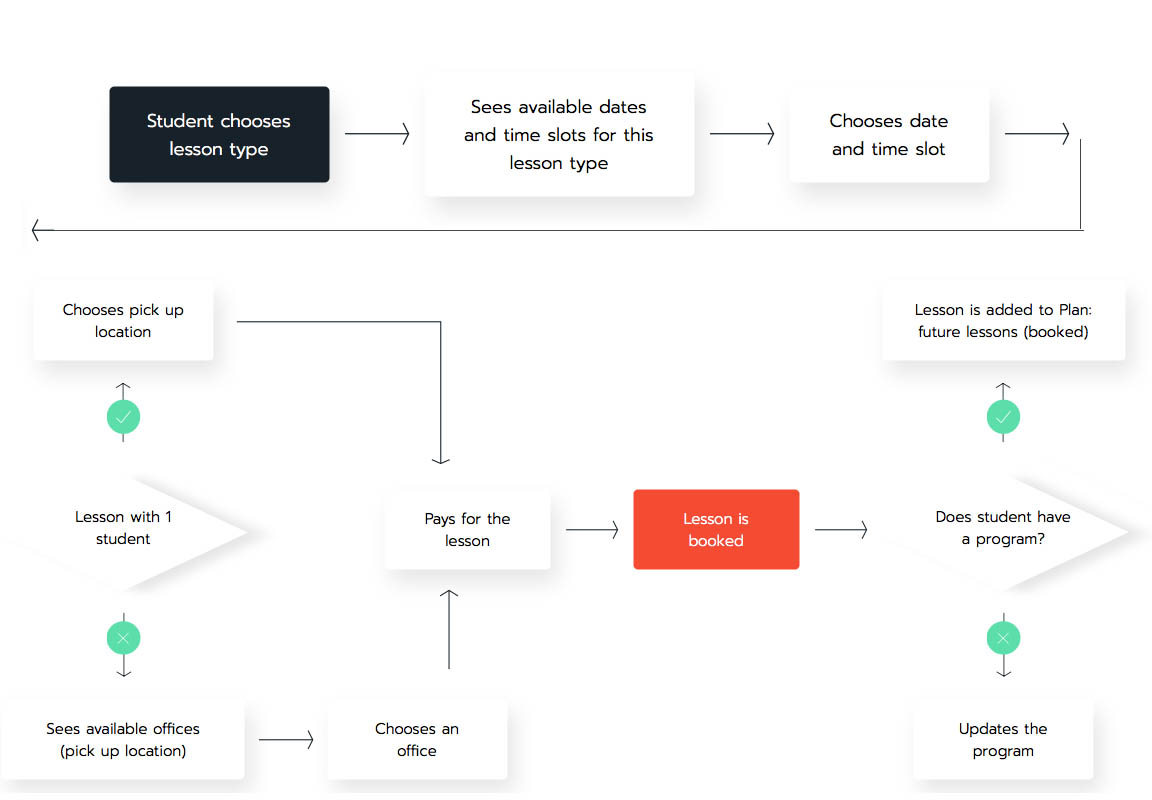
3. Roadmap
The result of proof of concept is not a finished product. The solution’s prototype with the conclusion “pass/fail” matters, so speed and a small investment are essential for this phase. It is possible to use solutions that have already been tested – this allows us to speed up the workflow. This is how Kör’s roadmap looks like:
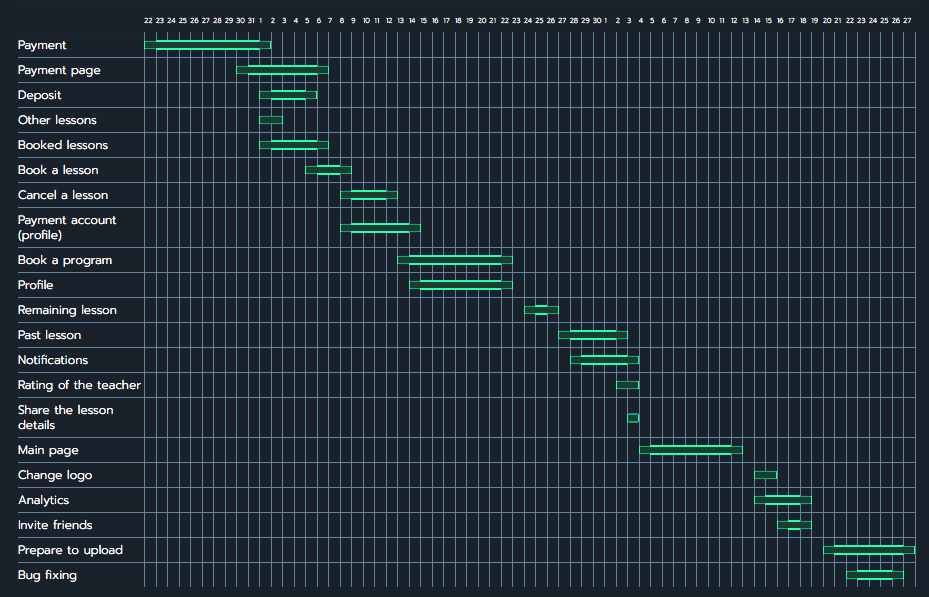
4. PoC development and testing
QA-engineer and project manager control the workflow and connect the team and the customer. Often, during the review process, it becomes clear whether the idea meets the business’s expectations.
Read more about this in the article about QA Documentation for Your Project.
5. Conducting a demo
Experts give a conclusion indicating the identified limitations and recommendations for further development. If there is no technical possibility to implement the idea, alternative ways to develop the project are suggested. If the expectations are met, this gives the green light for the start of the project.
It is also essential to make the PoC include the following:
- defined criteria for success;
- documentation for how the P0C will be carried out;
- an evaluation component;
- a proposal for how to proceed further if the PoC is successful.
PoC Deliverables at Fulcrum Rocks: implemented simple part of a product or suggested another option.
If you do not want a bad idea to ruin your startup, do not rush. Make sure your proof of concept has those necessary steps the team can follow.
Proof of Concept vs. Prototype
Quite often, the terms PoC and prototype are used interchangeably. Let’s try to understand in which cases it is most appropriate to use each of the above definitions to avoid misunderstandings.
PoC is a project created to test critical hypotheses before starting full development. A proof of concept is created to check whether a function can be implemented or if there is no certainty that the idea will work.
A prototype is designed to determine feasibility but does not represent the final deliverable. As a part of the discovery stage of software development, the prototype helps the team to check the product design, usability, and functionality.
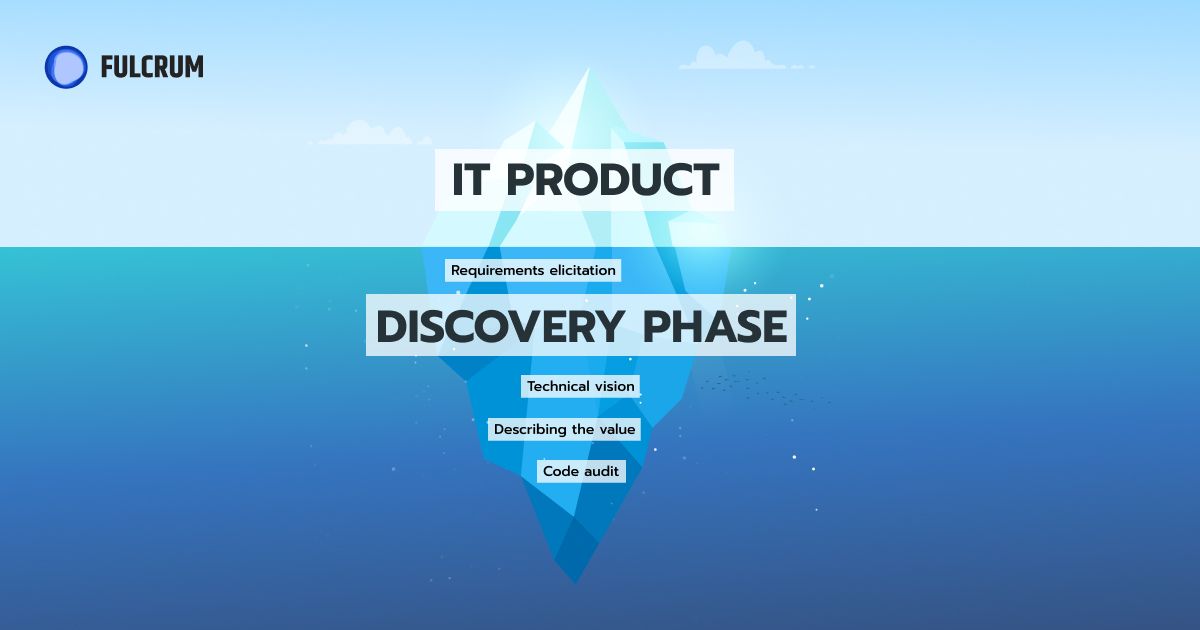
| Proof of Concept | Prototype | |
|---|---|---|
| Definition | Theoretical demonstration of a product/concept/process. | A very early draft of a product/concept/process. |
| the question behind it | Can a product be built or not? | How can a product be developed? |
As a result, we would like to note that although PoC and prototype have a lot in common, they still have different goals.
Proof of Concept vs. MVP
As mentioned earlier, the proof of concept demonstrates that the business model or idea is feasible. MVP is the first version of a proposed action or product.
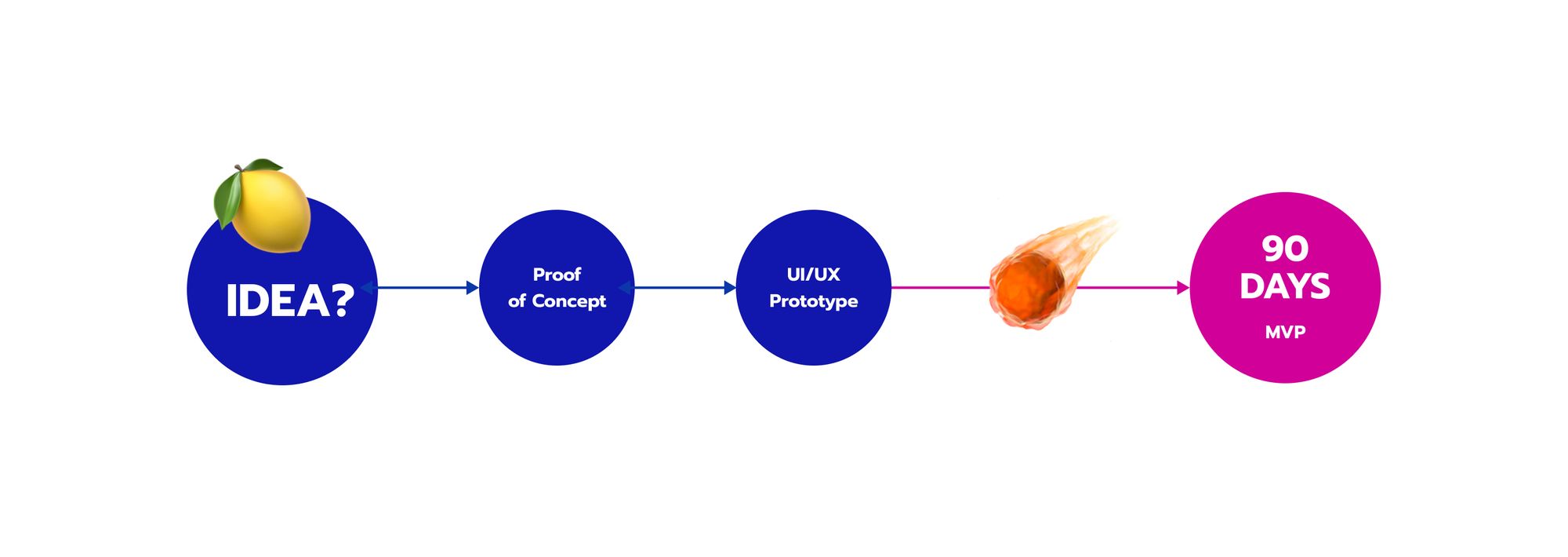
PoC refers to a specific scenario and confirms that the client needs to be confident to decide on a technical or secure solution.
| PoC | MVP | |
|---|---|---|
| Scale | Small | Medium |
| Utility | None | Minimal |
| Complexity | Low | Modest |
| Timeframe | Shortest | Optimal |

Conclusion
Sometimes in software development, we face the problem of false expectations. It occurred when the original idea was poorly thought out and worked out. There are many cost-effective ways to prove that your brilliant idea can turn into a successful product.
PoC is an effective tool that allows you to identify the difficulties associated with the design and technical execution and find ways to solve them. After, you can make sure that the idea is worth investing time and resources in.
If you have a project idea that needs to be tested for feasibility — just contact us! Together, we’ll turn your hypothesis into a profitable project!
Proof of Concept FAQ
-
What is POC?POC term means Proof Of Concept. It demonstrates the practical feasibility of a method, idea, or technology to prove they will work.
-
How to write a proof of concept?When writing a proof of concept, make sure the following steps are included: Estimate the time & resources needed. Define the scope of the project to get accurate results. Choose your resources. Determine success criteria
-
When your proof of concept is ready, you need to:Test it to determine if it meets your success criteria Create a UI/UX prototype of your new feature/functionality Move to develop an MVP


